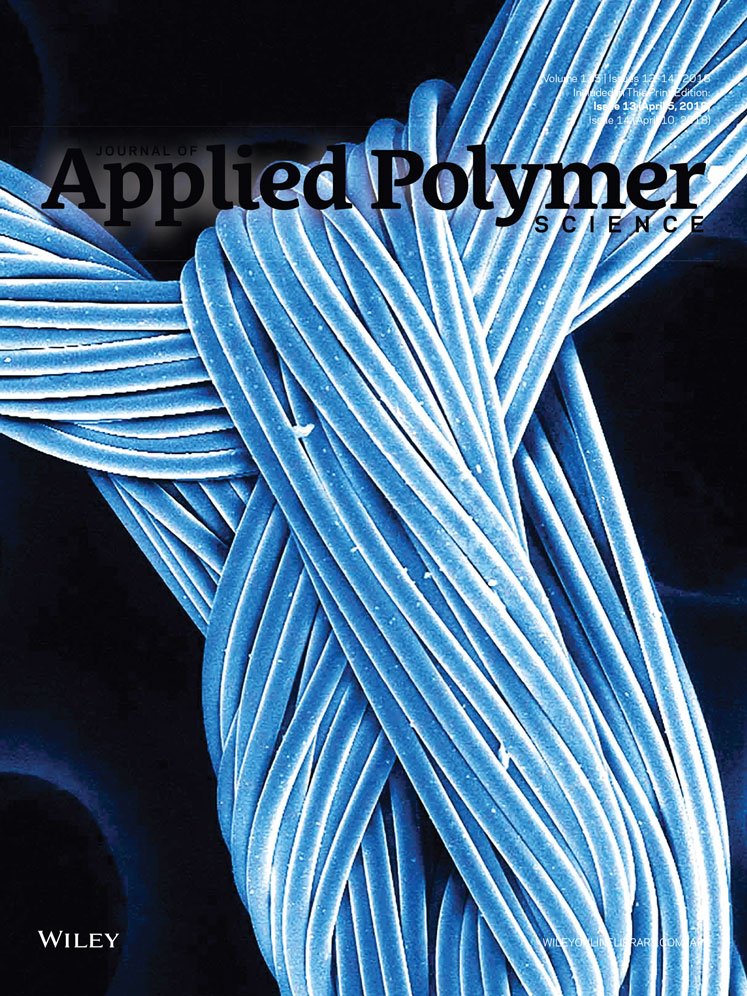Sustainable bionanocomposite from d,l-lactide/δ-valerolactone triblock and bionanowhiskers: Preparation, characterization, and properties
ABSTRACT
Bionanocomposites were prepared using d,l-lactide–δ-valerolactone–d,l-lactide triblock and unmodified and modified cellulose nanowhiskers (CNs) at different loadings (0, 2, 4, 8 wt %). Poly(δ-valerolactone) chains were grafted on CNs for modification. These were characterized by various techniques. The broadening of OH (hydroxyl) stretching region and the presence of low-intensity peaks at 1064 cm−1 for CO/CC stretching vibration and 1426 cm−1 for bending vibration of CH2 group, were evident in Fourier transform infrared spectra of the nanocomposites. The increase in crystallinity was noticed as the amount of nanowhiskers was increased. The nanowhiskers having the width in the range of 80–300 nm were uniformly dispersed in the triblock matrix. The tensile strength and modulus increased by 130% and 50% respectively at 8 wt % of filler loading. The storage modulus, loss modulus, complex viscosity, and tan δ values increased with increased filler loading. Further improvement in mechanical properties was observed with the modified CNs. The modulus mapping from atomic force microscopy confirmed the effective reinforcement behavior of the nanowhiskers. Scaffold fabrication using the bionanocomposite exhibited porous nature, having a homogeneous dispersion of CNs on the surface of the scaffold. The 3-(4,5-Dimethylthiazol-2-yl)-2,5-diphenyltetrazolium bromide assay confirmed the suitability of the composite material for scaffold application. © 2017 Wiley Periodicals, Inc. J. Appl. Polym. Sci. 2017, 135, 46035.




